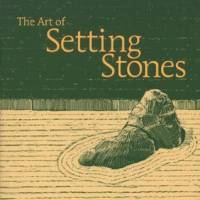Appropriating the Japanese garden as a vehicle to explore nature, beauty, relationships and death, the author begins with the premise that people "form the world around them into the shape of their philosophies," taking "mass and space, material and void" as content for their social structures, spiritual values and modes of thinking.
The Art of Setting Stones, by Marc Peter Keane
160 pages
Stone Bridge Press, Nonfiction.
Reading "The Art of Setting Stones," one can only conclude that the finest Japanese gardens, though organic and perishable, are not only veritable works of art, but also repositories of ideas and wisdom. Keane's meditative book prompts the thought that the Japanese garden — its walls made of clay, viewing deck from timber, rocks taken from mountain sides and riverbeds — is less an imitation of nature than a composite of nature. The most skillful garden designers, one could say, transform raw materials into form, which in turn transcends nature.
An authority on the subject of Japanese garden aesthetics, the symbolism of their design and elements, the author readily admits to their opacity.
"I imagine," he writes, "there are some rhythms in the garden so quick, so minute in their fluctuation, that they remain beyond the limit of our perception."
In recognizing the imperceptible complexity of their design and nature, Keane writes not simply about the garden's temporal aspects and changes, but also our own.
Read archived reviews of Japanese classics at jtimes.jp/essential.



















With your current subscription plan you can comment on stories. However, before writing your first comment, please create a display name in the Profile section of your subscriber account page.